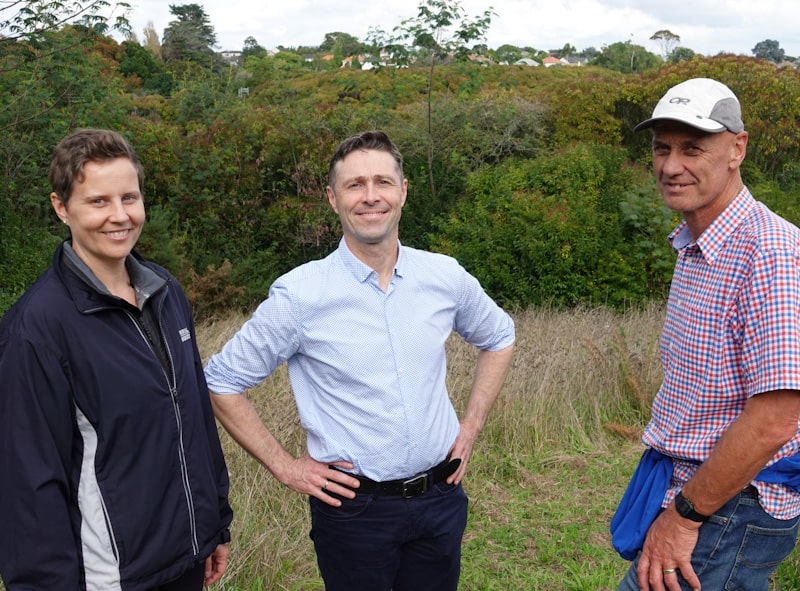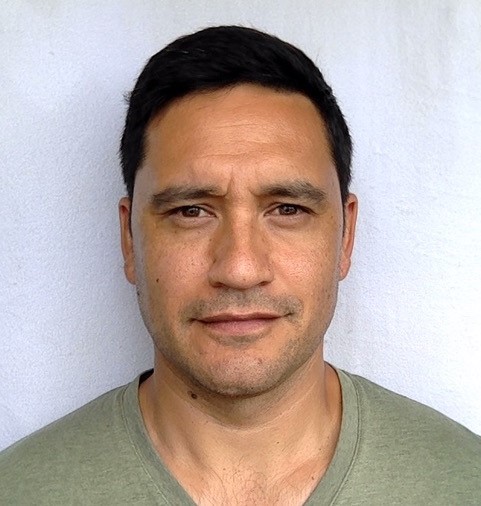A recently published paper has provided evidence and framework to support reform in wildlife management regulations surrounding the customary harvest of swan eggs at Te Waihora (Lake Ellesmere).
Category: News
Myrtle rust researchers return to the international conference scene
After our lengthy isolation due to COVID, our researchers have finally been able to travel overseas to connect with their international colleagues. Many plant diseases, such as myrtle rust, are being studied by research teams all around the world, so in-person hui can help us overcome roadblocks and catalyse progress.
Master’s student brings Tea Bag Index method to kauri forests
Siqi Yang, a Master’s student with the Risk Assessment & Ecosystem Impacts team, used a new-to-kauri-forests method of measuring decomposition rates in soil: the Tea Bag Index method.
What’s good for Dr Sara Belcher is good for everyone
Dr Sara Belcher (Te Arawa) has recently been offered a tenured position at Te Herenga Waka – Victoria University of Wellington. With tenure, she now has avenues for making the Environmental State Assessment Tool (ESAT)—which she developed during her PhD—into an open-source tool available for all.
The science of cascades: understanding impact propagation to enhance conservation efforts
How do disturbances in our ecosystems spread and cascade across landscapes? David Garcia-Callejas is an ecologist working at the University of Canterbury with our Crazy & Ambitious Think Tank – and puzzles like this are his speciality.
Farming & Nature Conservation attracts over $2.7 million in co-funding
A Tranche 1 BioHeritage project has attracted over $2.7 million in funding for its spin-off programmes – the AUT Living Laboratories Programme and the Farming with Native Biodiversity pilot.
Pūniu River Care: Investing in kaupapa Māori governance creates benefits for community and culture
A recent study into Pūniu River Care Inc. found that there is “an urgent need for kaupapa Māori led and designed organisations” such as PRC within environmental management in Aotearoa to have “longer term impact”.
Ngā Pī Ka Rere spotlight: Nathan Matamua, connecting environment with Māori astronomy
We welcome Nathan Matamua, a Master’s student at Massey University, to Empowering Kaitiakitanga & Environmental Stewardship (SO2). He will be investigating alternative ways of expressing and caring for water resources using the stars as a guide.
Ngā Pī Ka Rere spotlight: Karla Carey, interrogating the use of kaitiakitanga in policy
Karla Carey has arrived in environmental stewardship through growing her passion for psychology and her interest in her Māori culture. We welcome Karla, a Master’s student at Massey University, to the Empowering Kaitiakitanga & Environmental Stewardship team.
Eco-index the first in New Zealand to gain international Digital Public Good certification
The Eco-index Biodiversity Dashboards have successfully qualified as a Digital Public Good with the international Digital Public Goods Alliance – the first to do so from Aotearoa New Zealand. This is an outstanding achievement and a win for open-source collaboration in international conservation.
An awa for a signpost: BioHeritage welcomes Waimirirangi Ormsby
Waimirirangi Ormsby (Waikato, Ngātiwai) is our newly appointed Kaiārahi (Knowledge Broker Māori). Waimirirangi met with BioHeritage writer Kerry Donovan Brown to share her vision for her Kaiārahi role. In doing so she reflected on the ways she is shaped by her connection with Aotearoa, and the Aotearoa she’s helping shape for her descendants.
Kauri Ora and Myrtle Ora community meetings – invaluable places to connect
The Kauri Ora and Myrtle Ora community meetings are hui ā-ipurangi (virtual meetings) open to the public, where regional councils, researchers and communities give updates on operations and on the science on these two pathogens. Resources are shared, questions are posed, and connections are made all across Aotearoa. For the September hui, the Kauri Ora platform uplifted a special exhibition showcasing the knowledge and artistry of some of our youngest environmental kaitiaki (guardians).











